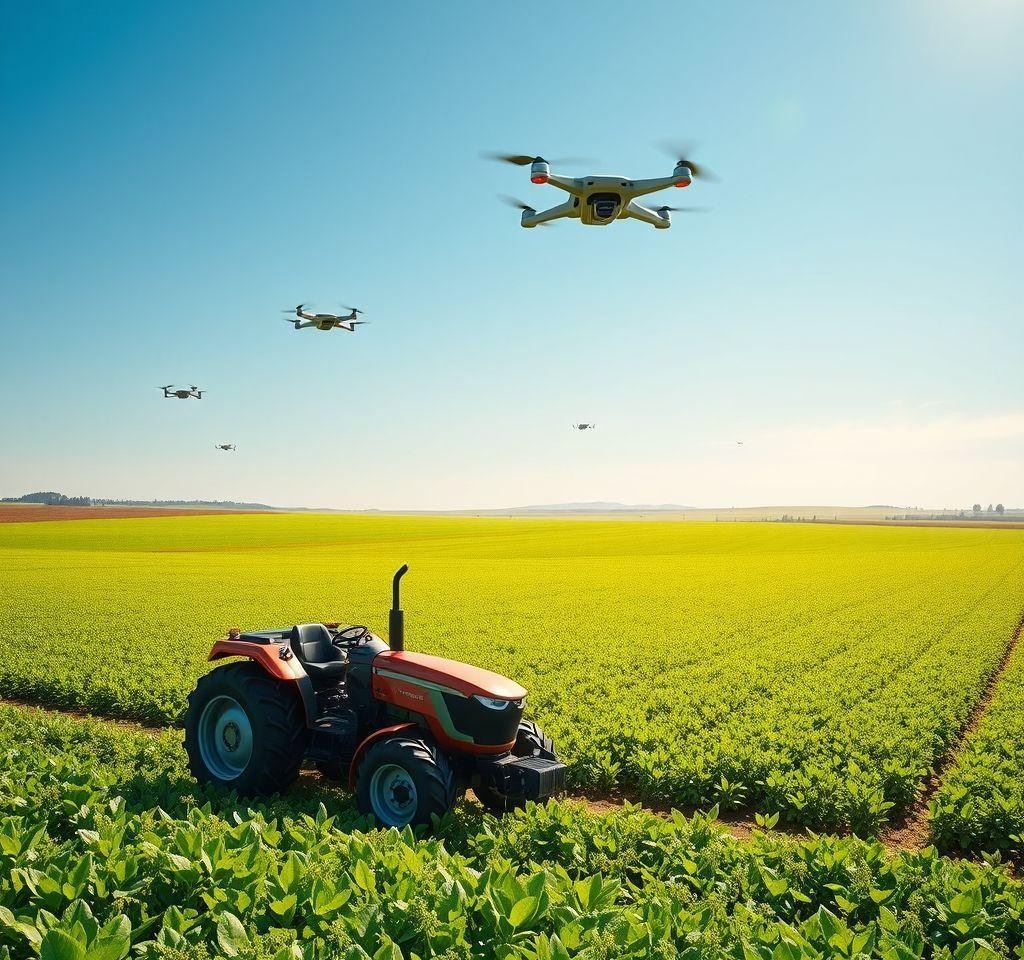Revolutionizing Content: The Ultimate Guide to AI Tools
The integration of artificial intelligence into content creation has transformed how businesses and creators produce, refine, and distribute media. This guide explores cutting-edge AI tools that streamline workflows, reduce costs, and elevate output quality while addressing ethical considerations and future innovations.
Introduction to AI in Content Creation
Introduction to AI in Content Creation
This chapter introduces the fundamental concepts of AI-driven content creation. It examines the evolution from traditional content creation methods to AI-powered workflows. We’ll also explore adoption rates and the broader industry impact of these technological advancements.
Traditional content creation often relied on manual processes. These were time-consuming and resource-intensive. AI-powered tools automate many aspects of this process. This includes ideation, writing, editing, and optimization.
The shift towards AI is significant. Businesses are integrating AI into their workflows. They are seeing increased efficiency and improved content quality. This adoption is across various sectors. The impact on content marketing is particularly notable. AI tools are helping businesses create more engaging and effective content.
The increasing reliance on AI in content creation is transforming the industry. It creates new opportunities, but also challenges. These need careful consideration. Understanding this transition is critical for anyone working with content.
Top AI Writing and Copywriting Tools
Introduction to AI in Content Creation
This chapter introduces the fundamental concepts of AI-driven content creation. It examines the evolution from traditional content creation methods to AI-powered workflows. We’ll also explore adoption rates and the broader industry impact of these technological advancements.
Traditional content creation often relied on manual processes. These were time-consuming and resource-intensive. AI-powered tools automate many aspects of this process. This includes ideation, writing, editing, and optimization.
The shift towards AI is significant. Businesses are integrating AI into their workflows. They are seeing increased efficiency and improved content quality. This adoption is across various sectors. The impact on content marketing is particularly notable. AI tools are helping businesses create more engaging and effective content.
The increasing reliance on AI in content creation is transforming the industry. It creates new opportunities, but also challenges. These need careful consideration. Understanding this transition is critical for anyone working with content.
AI-Driven Visual and Multimedia Creation
Introduction to AI in Content Creation
This chapter introduces the fundamental concepts of AI-driven content creation. It examines the evolution from traditional content creation methods to AI-powered workflows. We’ll also explore adoption rates and the broader industry impact of these technological advancements.
Traditional content creation often relied on manual processes. These were time-consuming and resource-intensive. AI-powered tools automate many aspects of this process. This includes ideation, writing, editing, and optimization.
The shift towards AI is significant. Businesses are integrating AI into their workflows. They are seeing increased efficiency and improved content quality. This adoption is across various sectors. The impact on content marketing is particularly notable. AI tools are helping businesses create more engaging and effective content.
The increasing reliance on AI in content creation is transforming the industry. It creates new opportunities, but also challenges. These need careful consideration. Understanding this transition is critical for anyone working with content.
Optimization & Analysis with AI
Introduction to AI in Content Creation
This chapter introduces the fundamental concepts of AI-driven content creation. It examines the evolution from traditional content creation methods to AI-powered workflows. We’ll also explore adoption rates and the broader industry impact of these technological advancements.
Traditional content creation often relied on manual processes. These were time-consuming and resource-intensive. AI-powered tools automate many aspects of this process. This includes ideation, writing, editing, and optimization.
The shift towards AI is significant. Businesses are integrating AI into their workflows. They are seeing increased efficiency and improved content quality. This adoption is across various sectors. The impact on content marketing is particularly notable. AI tools are helping businesses create more engaging and effective content.
The increasing reliance on AI in content creation is transforming the industry. It creates new opportunities, but also challenges. These need careful consideration. Understanding this transition is critical for anyone working with content.
Ethical Implications and Future Directions
Introduction to AI in Content Creation
This chapter introduces the fundamental concepts of AI-driven content creation. It examines the evolution from traditional content creation methods to AI-powered workflows. We’ll also explore adoption rates and the broader industry impact of these technological advancements.
Traditional content creation often relied on manual processes. These were time-consuming and resource-intensive. AI-powered tools automate many aspects of this process. This includes ideation, writing, editing, and optimization.
The shift towards AI is significant. Businesses are integrating AI into their workflows. They are seeing increased efficiency and improved content quality. This adoption is across various sectors. The impact on content marketing is particularly notable. AI tools are helping businesses create more engaging and effective content.
The increasing reliance on AI in content creation is transforming the industry. It creates new opportunities, but also challenges. These need careful consideration. Understanding this transition is critical for anyone working with content.
Introduction to AI in Content Creation
Top AI Writing and Copywriting Tools
This chapter explores various AI writing and copywriting tools. We will examine their capabilities. These include content generation, tone adjustment, and scalability. We will also cover practical applications in different content formats.
Many tools offer a range of features. These features streamline the writing process. They assist in creating various types of content. This includes blogs, emails, and social media posts. These tools often allow for customization of writing styles. This helps ensure brand consistency across platforms.
The ability to scale content production is crucial. These tools allow for efficient creation of large volumes of content. This is essential for businesses needing consistent, high-quality output across multiple channels. Users can specify desired tones and styles. This allows for diverse and targeted content strategies.
Using AI tools effectively requires careful consideration. Understanding their strengths and limitations is important. This knowledge ensures the tools are leveraged for maximum impact. Successful implementation hinges on thoughtful integration into existing content strategies. This leads to more effective and efficient content workflows.
Top AI Writing and Copywriting Tools
Top AI Writing and Copywriting Tools
This chapter explores various AI writing and copywriting tools. We will examine their capabilities. These include content generation, tone adjustment, and scalability. We will also cover practical applications in different content formats.
Many tools offer a range of features. These features streamline the writing process. They assist in creating various types of content. This includes blogs, emails, and social media posts. These tools often allow for customization of writing styles. This helps ensure brand consistency across platforms.
The ability to scale content production is crucial. These tools allow for efficient creation of large volumes of content. This is essential for businesses needing consistent, high-quality output across multiple channels. Users can specify desired tones and styles. This allows for diverse and targeted content strategies.
Using AI tools effectively requires careful consideration. Understanding their strengths and limitations is important. This knowledge ensures the tools are leveraged for maximum impact. Successful implementation hinges on thoughtful integration into existing content strategies. This leads to more effective and efficient content workflows.
AI-Driven Visual and Multimedia Creation
Top AI Writing and Copywriting Tools
This chapter explores various AI writing and copywriting tools. We will examine their capabilities. These include content generation, tone adjustment, and scalability. We will also cover practical applications in different content formats.
Many tools offer a range of features. These features streamline the writing process. They assist in creating various types of content. This includes blogs, emails, and social media posts. These tools often allow for customization of writing styles. This helps ensure brand consistency across platforms.
The ability to scale content production is crucial. These tools allow for efficient creation of large volumes of content. This is essential for businesses needing consistent, high-quality output across multiple channels. Users can specify desired tones and styles. This allows for diverse and targeted content strategies.
Using AI tools effectively requires careful consideration. Understanding their strengths and limitations is important. This knowledge ensures the tools are leveraged for maximum impact. Successful implementation hinges on thoughtful integration into existing content strategies. This leads to more effective and efficient content workflows.
Optimization & Analysis with AI
Top AI Writing and Copywriting Tools
This chapter explores various AI writing and copywriting tools. We will examine their capabilities. These include content generation, tone adjustment, and scalability. We will also cover practical applications in different content formats.
Many tools offer a range of features. These features streamline the writing process. They assist in creating various types of content. This includes blogs, emails, and social media posts. These tools often allow for customization of writing styles. This helps ensure brand consistency across platforms.
The ability to scale content production is crucial. These tools allow for efficient creation of large volumes of content. This is essential for businesses needing consistent, high-quality output across multiple channels. Users can specify desired tones and styles. This allows for diverse and targeted content strategies.
Using AI tools effectively requires careful consideration. Understanding their strengths and limitations is important. This knowledge ensures the tools are leveraged for maximum impact. Successful implementation hinges on thoughtful integration into existing content strategies. This leads to more effective and efficient content workflows.
Ethical Implications and Future Directions
Top AI Writing and Copywriting Tools
This chapter explores various AI writing and copywriting tools. We will examine their capabilities. These include content generation, tone adjustment, and scalability. We will also cover practical applications in different content formats.
Many tools offer a range of features. These features streamline the writing process. They assist in creating various types of content. This includes blogs, emails, and social media posts. These tools often allow for customization of writing styles. This helps ensure brand consistency across platforms.
The ability to scale content production is crucial. These tools allow for efficient creation of large volumes of content. This is essential for businesses needing consistent, high-quality output across multiple channels. Users can specify desired tones and styles. This allows for diverse and targeted content strategies.
Using AI tools effectively requires careful consideration. Understanding their strengths and limitations is important. This knowledge ensures the tools are leveraged for maximum impact. Successful implementation hinges on thoughtful integration into existing content strategies. This leads to more effective and efficient content workflows.
Introduction to AI in Content Creation
AI-Driven Visual and Multimedia Creation
This chapter delves into AI tools for visual and multimedia content creation. We will explore their capabilities in image and video generation, style transfer, and overall multimedia content enhancement. These tools are transforming how businesses create engaging content.
AI-powered tools are revolutionizing the creation of images and videos. They offer features such as generating content from text prompts. They also allow for manipulating existing media. Style transfer is a particularly exciting development. This allows for the application of artistic styles to various media types.
The quality of multimedia content is significantly improved. This is due to the speed and efficiency of AI tools. These tools enable the creation of high-quality visuals. This would be time-consuming and expensive using traditional methods. Businesses across numerous industries are adopting this technology. This improves their marketing materials and internal communications.
The integration of AI in multimedia creation is ongoing. There are continuous advancements in algorithms and capabilities. This means ever-increasing creative potential. The future of visual storytelling is significantly shaped by these evolving tools.
Top AI Writing and Copywriting Tools
AI-Driven Visual and Multimedia Creation
This chapter delves into AI tools for visual and multimedia content creation. We will explore their capabilities in image and video generation, style transfer, and overall multimedia content enhancement. These tools are transforming how businesses create engaging content.
AI-powered tools are revolutionizing the creation of images and videos. They offer features such as generating content from text prompts. They also allow for manipulating existing media. Style transfer is a particularly exciting development. This allows for the application of artistic styles to various media types.
The quality of multimedia content is significantly improved. This is due to the speed and efficiency of AI tools. These tools enable the creation of high-quality visuals. This would be time-consuming and expensive using traditional methods. Businesses across numerous industries are adopting this technology. This improves their marketing materials and internal communications.
The integration of AI in multimedia creation is ongoing. There are continuous advancements in algorithms and capabilities. This means ever-increasing creative potential. The future of visual storytelling is significantly shaped by these evolving tools.
AI-Driven Visual and Multimedia Creation
AI-Driven Visual and Multimedia Creation
This chapter delves into AI tools for visual and multimedia content creation. We will explore their capabilities in image and video generation, style transfer, and overall multimedia content enhancement. These tools are transforming how businesses create engaging content.
AI-powered tools are revolutionizing the creation of images and videos. They offer features such as generating content from text prompts. They also allow for manipulating existing media. Style transfer is a particularly exciting development. This allows for the application of artistic styles to various media types.
The quality of multimedia content is significantly improved. This is due to the speed and efficiency of AI tools. These tools enable the creation of high-quality visuals. This would be time-consuming and expensive using traditional methods. Businesses across numerous industries are adopting this technology. This improves their marketing materials and internal communications.
The integration of AI in multimedia creation is ongoing. There are continuous advancements in algorithms and capabilities. This means ever-increasing creative potential. The future of visual storytelling is significantly shaped by these evolving tools.
Optimization & Analysis with AI
AI-Driven Visual and Multimedia Creation
This chapter delves into AI tools for visual and multimedia content creation. We will explore their capabilities in image and video generation, style transfer, and overall multimedia content enhancement. These tools are transforming how businesses create engaging content.
AI-powered tools are revolutionizing the creation of images and videos. They offer features such as generating content from text prompts. They also allow for manipulating existing media. Style transfer is a particularly exciting development. This allows for the application of artistic styles to various media types.
The quality of multimedia content is significantly improved. This is due to the speed and efficiency of AI tools. These tools enable the creation of high-quality visuals. This would be time-consuming and expensive using traditional methods. Businesses across numerous industries are adopting this technology. This improves their marketing materials and internal communications.
The integration of AI in multimedia creation is ongoing. There are continuous advancements in algorithms and capabilities. This means ever-increasing creative potential. The future of visual storytelling is significantly shaped by these evolving tools.
Ethical Implications and Future Directions
AI-Driven Visual and Multimedia Creation
This chapter delves into AI tools for visual and multimedia content creation. We will explore their capabilities in image and video generation, style transfer, and overall multimedia content enhancement. These tools are transforming how businesses create engaging content.
AI-powered tools are revolutionizing the creation of images and videos. They offer features such as generating content from text prompts. They also allow for manipulating existing media. Style transfer is a particularly exciting development. This allows for the application of artistic styles to various media types.
The quality of multimedia content is significantly improved. This is due to the speed and efficiency of AI tools. These tools enable the creation of high-quality visuals. This would be time-consuming and expensive using traditional methods. Businesses across numerous industries are adopting this technology. This improves their marketing materials and internal communications.
The integration of AI in multimedia creation is ongoing. There are continuous advancements in algorithms and capabilities. This means ever-increasing creative potential. The future of visual storytelling is significantly shaped by these evolving tools.
Introduction to AI in Content Creation
Optimization & Analysis with AI
This chapter explores AI tools designed for content optimization and analysis. We’ll examine their roles in refining content, performing grammar checks, optimizing keywords, and analyzing reader engagement. These tools are crucial for maximizing content effectiveness.
Many tools offer automated grammar and style checks. This ensures consistent quality and professionalism. They identify and suggest corrections. This improves clarity and readability. Keyword optimization tools analyze search trends. They identify relevant keywords for improved search engine rankings.
Reader engagement analysis is another key feature. These tools track metrics. This includes time on page, bounce rate, and social shares. This data provides valuable insights. This helps in understanding what resonates with the audience. Using this data, content can be tailored to maximize impact.
Integrating these tools into your workflow is vital. They enhance content performance and efficiency. Continuous improvement is a central part of content strategy. These tools provide the data and functionality needed to achieve this.
Top AI Writing and Copywriting Tools
Optimization & Analysis with AI
This chapter explores AI tools designed for content optimization and analysis. We’ll examine their roles in refining content, performing grammar checks, optimizing keywords, and analyzing reader engagement. These tools are crucial for maximizing content effectiveness.
Many tools offer automated grammar and style checks. This ensures consistent quality and professionalism. They identify and suggest corrections. This improves clarity and readability. Keyword optimization tools analyze search trends. They identify relevant keywords for improved search engine rankings.
Reader engagement analysis is another key feature. These tools track metrics. This includes time on page, bounce rate, and social shares. This data provides valuable insights. This helps in understanding what resonates with the audience. Using this data, content can be tailored to maximize impact.
Integrating these tools into your workflow is vital. They enhance content performance and efficiency. Continuous improvement is a central part of content strategy. These tools provide the data and functionality needed to achieve this.
AI-Driven Visual and Multimedia Creation
Optimization & Analysis with AI
This chapter explores AI tools designed for content optimization and analysis. We’ll examine their roles in refining content, performing grammar checks, optimizing keywords, and analyzing reader engagement. These tools are crucial for maximizing content effectiveness.
Many tools offer automated grammar and style checks. This ensures consistent quality and professionalism. They identify and suggest corrections. This improves clarity and readability. Keyword optimization tools analyze search trends. They identify relevant keywords for improved search engine rankings.
Reader engagement analysis is another key feature. These tools track metrics. This includes time on page, bounce rate, and social shares. This data provides valuable insights. This helps in understanding what resonates with the audience. Using this data, content can be tailored to maximize impact.
Integrating these tools into your workflow is vital. They enhance content performance and efficiency. Continuous improvement is a central part of content strategy. These tools provide the data and functionality needed to achieve this.
Optimization & Analysis with AI
Optimization & Analysis with AI
This chapter explores AI tools designed for content optimization and analysis. We’ll examine their roles in refining content, performing grammar checks, optimizing keywords, and analyzing reader engagement. These tools are crucial for maximizing content effectiveness.
Many tools offer automated grammar and style checks. This ensures consistent quality and professionalism. They identify and suggest corrections. This improves clarity and readability. Keyword optimization tools analyze search trends. They identify relevant keywords for improved search engine rankings.
Reader engagement analysis is another key feature. These tools track metrics. This includes time on page, bounce rate, and social shares. This data provides valuable insights. This helps in understanding what resonates with the audience. Using this data, content can be tailored to maximize impact.
Integrating these tools into your workflow is vital. They enhance content performance and efficiency. Continuous improvement is a central part of content strategy. These tools provide the data and functionality needed to achieve this.
Ethical Implications and Future Directions
Optimization & Analysis with AI
This chapter explores AI tools designed for content optimization and analysis. We’ll examine their roles in refining content, performing grammar checks, optimizing keywords, and analyzing reader engagement. These tools are crucial for maximizing content effectiveness.
Many tools offer automated grammar and style checks. This ensures consistent quality and professionalism. They identify and suggest corrections. This improves clarity and readability. Keyword optimization tools analyze search trends. They identify relevant keywords for improved search engine rankings.
Reader engagement analysis is another key feature. These tools track metrics. This includes time on page, bounce rate, and social shares. This data provides valuable insights. This helps in understanding what resonates with the audience. Using this data, content can be tailored to maximize impact.
Integrating these tools into your workflow is vital. They enhance content performance and efficiency. Continuous improvement is a central part of content strategy. These tools provide the data and functionality needed to achieve this.
Introduction to AI in Content Creation
Ethical Implications and Future Directions
This chapter addresses the ethical considerations surrounding AI in content creation. We will discuss plagiarism risks, bias mitigation, and responsible AI usage. We will also explore emerging trends, such as multimodal AI and real-time content personalization.
Plagiarism is a significant concern. AI tools can unintentionally reproduce existing content. Careful monitoring and verification are crucial. Bias mitigation is another key challenge. AI models can inherit biases from their training data. This can lead to unfair or discriminatory content. Addressing this bias requires careful model development and ongoing monitoring.
Ethical AI use involves transparency and accountability. Users should understand how these tools function. They should also be aware of their limitations. Emerging trends like multimodal AI are expanding capabilities. This includes integrating text, images, and audio. Real-time personalization is also developing. This tailors content dynamically to individual users.
The responsible development and use of AI in content creation are paramount. This includes ongoing ethical considerations. Addressing these challenges fosters trust and maximizes the benefits of this technology.
Top AI Writing and Copywriting Tools
Ethical Implications and Future Directions
This chapter addresses the ethical considerations surrounding AI in content creation. We will discuss plagiarism risks, bias mitigation, and responsible AI usage. We will also explore emerging trends, such as multimodal AI and real-time content personalization.
Plagiarism is a significant concern. AI tools can unintentionally reproduce existing content. Careful monitoring and verification are crucial. Bias mitigation is another key challenge. AI models can inherit biases from their training data. This can lead to unfair or discriminatory content. Addressing this bias requires careful model development and ongoing monitoring.
Ethical AI use involves transparency and accountability. Users should understand how these tools function. They should also be aware of their limitations. Emerging trends like multimodal AI are expanding capabilities. This includes integrating text, images, and audio. Real-time personalization is also developing. This tailors content dynamically to individual users.
The responsible development and use of AI in content creation are paramount. This includes ongoing ethical considerations. Addressing these challenges fosters trust and maximizes the benefits of this technology.
AI-Driven Visual and Multimedia Creation
Ethical Implications and Future Directions
This chapter addresses the ethical considerations surrounding AI in content creation. We will discuss plagiarism risks, bias mitigation, and responsible AI usage. We will also explore emerging trends, such as multimodal AI and real-time content personalization.
Plagiarism is a significant concern. AI tools can unintentionally reproduce existing content. Careful monitoring and verification are crucial. Bias mitigation is another key challenge. AI models can inherit biases from their training data. This can lead to unfair or discriminatory content. Addressing this bias requires careful model development and ongoing monitoring.
Ethical AI use involves transparency and accountability. Users should understand how these tools function. They should also be aware of their limitations. Emerging trends like multimodal AI are expanding capabilities. This includes integrating text, images, and audio. Real-time personalization is also developing. This tailors content dynamically to individual users.
The responsible development and use of AI in content creation are paramount. This includes ongoing ethical considerations. Addressing these challenges fosters trust and maximizes the benefits of this technology.
Optimization & Analysis with AI
Ethical Implications and Future Directions
This chapter addresses the ethical considerations surrounding AI in content creation. We will discuss plagiarism risks, bias mitigation, and responsible AI usage. We will also explore emerging trends, such as multimodal AI and real-time content personalization.
Plagiarism is a significant concern. AI tools can unintentionally reproduce existing content. Careful monitoring and verification are crucial. Bias mitigation is another key challenge. AI models can inherit biases from their training data. This can lead to unfair or discriminatory content. Addressing this bias requires careful model development and ongoing monitoring.
Ethical AI use involves transparency and accountability. Users should understand how these tools function. They should also be aware of their limitations. Emerging trends like multimodal AI are expanding capabilities. This includes integrating text, images, and audio. Real-time personalization is also developing. This tailors content dynamically to individual users.
The responsible development and use of AI in content creation are paramount. This includes ongoing ethical considerations. Addressing these challenges fosters trust and maximizes the benefits of this technology.
Ethical Implications and Future Directions
Ethical Implications and Future Directions
This chapter addresses the ethical considerations surrounding AI in content creation. We will discuss plagiarism risks, bias mitigation, and responsible AI usage. We will also explore emerging trends, such as multimodal AI and real-time content personalization.
Plagiarism is a significant concern. AI tools can unintentionally reproduce existing content. Careful monitoring and verification are crucial. Bias mitigation is another key challenge. AI models can inherit biases from their training data. This can lead to unfair or discriminatory content. Addressing this bias requires careful model development and ongoing monitoring.
Ethical AI use involves transparency and accountability. Users should understand how these tools function. They should also be aware of their limitations. Emerging trends like multimodal AI are expanding capabilities. This includes integrating text, images, and audio. Real-time personalization is also developing. This tailors content dynamically to individual users.
The responsible development and use of AI in content creation are paramount. This includes ongoing ethical considerations. Addressing these challenges fosters trust and maximizes the benefits of this technology.
Final Words
AI tools are essential for modern content creation. By adopting these technologies, professionals can focus on strategy while AI handles execution. Always balance innovation with ethical practice. Start exploring these tools today to stay competitive.




